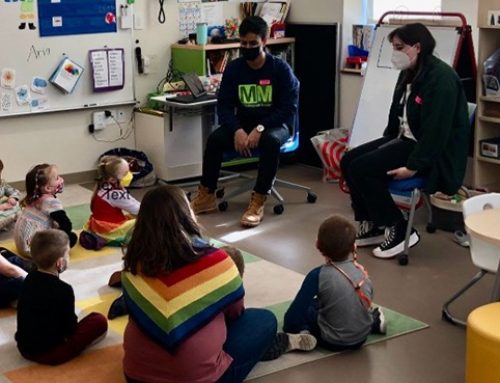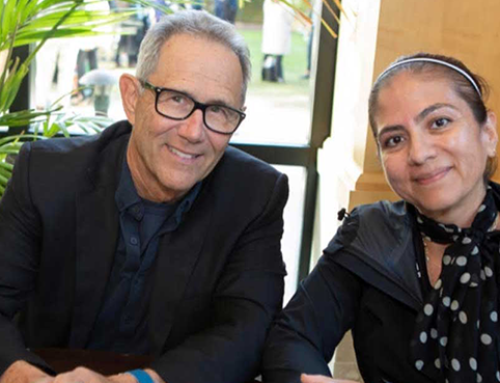
From the book America’s Bilingual Century:
Six Tips for Conversation Corps Partners
Tip No. 1: Be a learner, too
First, it helps greatly if you are learning their native language. This levels the table, away from teacher-student, and facilitates true conversations among equals. You are learning together, both being vulnerable and child-like, both being helpful and adult-like. It makes conversations more open and candid, and fosters true learning. Even if you’re not learning their particular language, if you are an emerging bilingual in another language, you still will be more likely to have empathy for what they are going through.
And if their native language is not your adopted language, learn a few buds of bilingualism. In each session, use a few words and expressions, ask for their feedback on pronunciation or specific meaning (for example, is “fish” both a noun and a verb, the way it is in English?), and have them suggest another word you can learn.
Tip No. 2: Quiet your mind
When listening, try to become comfortable with pauses and delays in the conversation, especially if you see them struggling. Resist the urge to fill in the empty space with helpful suggestions. The pauses you hear are the productive struggle so necessary to learning. With their permission, record a session so you can listen to yourself afterwards. This feedback may help you adjust and polish your listening style.
Tip No. 3: Rarely correct
Don’t feel you have to correct everything. It might make them self-conscious and reluctant to keep trying. What you’re shooting for is communication. Can they get their idea across, no matter how grammatically incorrect and oddly phrased? Good! Keep going.
There’s a technique called “covert correction,” which Barbara Zurer Pearson describes as “a technique of responding to errors not by drawing attention to them but by modeling correct usage within the conversation.” Our partner asks, “You do working today?” You respond, “Yes. Did you go to work today?”
Tip No. 4: Use simple, standard English
Use simple phrases, sentences, and vocabulary. Avoid idioms and figures of speech. Instead of “He did a complete one-eighty,” you might say, “He changed his mind, completely.” Rather than “He worked himself into a lather,” say “He got very excited.” As their English improves and your relationship develops, you can introduce some common idioms and slang. Ask them to teach you the same in their language, to keep your empathy meter ticking.
Tip No. 5: Keep sessions short
Using your adopted language can be exhausting. Professional interpreters usually work in just fifteen-minute shifts, so intense is the mental exercise of performing real-time translation in high-stakes professional environments. Simple conversations are not the same, of course, but even so, it’s hard mental work. Take a break. Switch between languages if you’re in a conversation exchange.
Tip. No. 6: Do things together
Sitting and chatting is fine, but it’s also mentally taxing, especially at the beginning and low-intermediate skill stages. As the science writer Marek Kohn says, “An hour spent in an uncertain language is like a day spent in one’s dominant tongue.” For an alternative, do something like cooking or work on a project together. Or take a walk. And as you do, describe in their adopted language—the names of the cooking utensils, the words for birds and trees and sidewalks.
Remember, too, that it’s not always about how much talking takes place. Give time for questions to form. Let answers linger. Such activities done well are an example of learning by doing; of not studying a language, but living it.
—Steve Leveen

A note to our readers: These tips appear in the appendix of Steve’s book, America’s Bilingual Century, which America the Bilingual Press published in January 2021. You can read more about the book here.
We’d love to hear your thoughts and ideas on the Conversation Corps. Feel free to comment on this post.





 You can book Steve for many different audiences
You can book Steve for many different audiences








 First, know that she has one of those glorious English accents (or what all of us who are not English would call an accent), which makes her a natural for the audio book narration that she does. Although U.S. born, Caroline grew up in England and studied literature at the University of Warwick (fyi for American ears: that second “w” is silent).
First, know that she has one of those glorious English accents (or what all of us who are not English would call an accent), which makes her a natural for the audio book narration that she does. Although U.S. born, Caroline grew up in England and studied literature at the University of Warwick (fyi for American ears: that second “w” is silent).




Leave A Comment